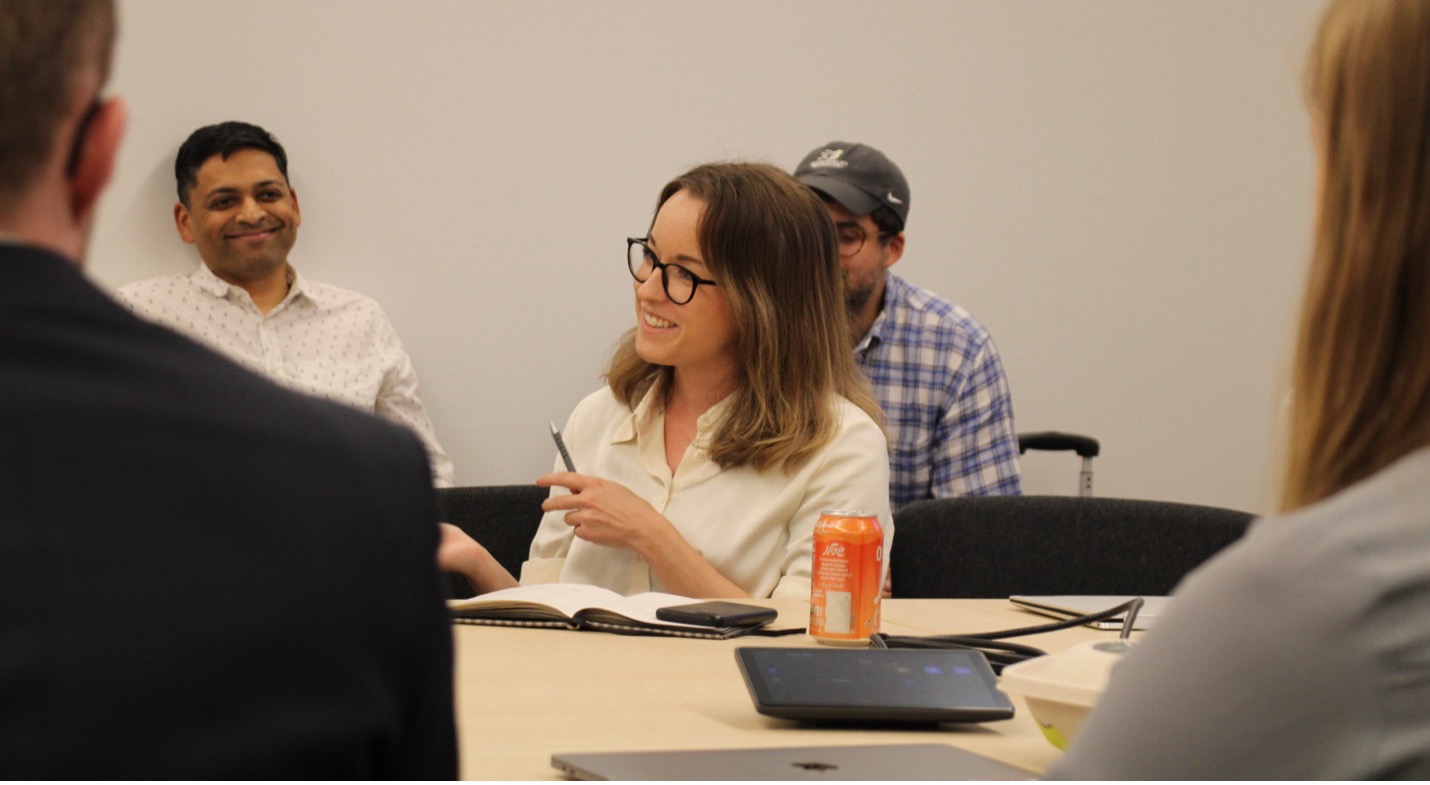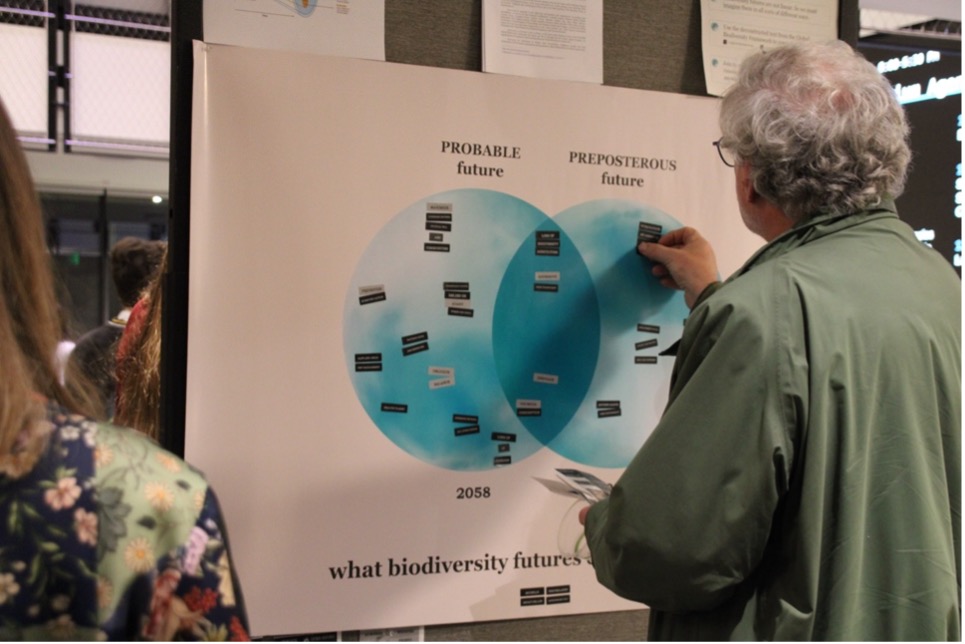Catching Up with Impact Fellow Michelle Westerlaken: Responsible & Community-centered Biodiversity Decision-making
August 11, 2025

Michelle leading the MCSC team in an interactive session on designing biodiversity systems.
MCSC Impact Fellow Michelle Westerlaken is an interdisciplinary design researcher specializing in biodiversity technologies and community-based practices. Michelle’s research investigates how emerging biodiversity technologies can be brought into conversation with communities who are impacted by these innovations, with her work most recently featured in Computer Supported Cooperative Work (CSCW). We spoke with her about her current research, her background, and the ways in which her work makes her proud.
What are you working on?
At the MCSC, I am working on the design of new data systems to support corporate biodiversity decision-making towards ecological regeneration. There are a lot of new data analysis technologies, sensors, and automation tools emerging in this space and my research shows that many of these systems are very limited in how they address biodiversity problems. I work together with the MCSC member companies to identify their biggest challenges in reducing biodiversity impacts and the role of data and digital platforms for supporting this work. We’re trying to imagine more long-term futures for how biodiversity data can become useful in decision-making processes. We’re also articulating how these systems can be designed to more effectively encourage companies to set meaningful biodiversity goals.

Michelle interacting with member companies at an in-person meeting.
The problem is that current data platforms are overshadowed by the logics of computation and data, and there is not enough focus on the vital and relational ecosystem phenomena that these systems can engage with. Designers play a huge role in this space because they are uniquely positioned to navigate between technical expertise, systemic problems, and imaginative practices that can help to question entrenched assumptions and reconfigure how technologies can better interface with the living world.

"I am translating these research insights into new openings for design to spark more creative proposals in this area."
My work gathers insights from research with different stakeholders including biodiversity restoration communities, ecologists, technologists, corporate sustainability specialists, and multispecies ecosystems themselves. I am translating these research insights into new openings for design to spark more creative proposals in this area.
How does your background shape the work you are doing with the MCSC?
In my prior work as an interaction designer and researcher I developed groundbreaking methods for including non-human living entities such as animals, plants, and other living organisms into design processes to imagine more sustainable futures. This idea of multispecies design has become super important for biodiversity now, because it’s able to shift our thinking from human-centered technologies towards more planet-centered ones. If you think about it, it’s actually quite odd that technologies that digitalize ecosystems are built solely around human ways of understanding the world. Ecological entities and processes aren’t limited to human constructs, they follow evolutionary dynamics, that is precisely why they are so crucial to the future of this planet. Data systems that mediate these processes would become so much more effective when they are more deliberately designed according to wider ecosystems dynamics and relations.
I also worked on identifying the socio-political dimensions of biodiversity technologies with restoration communities and living labs. This work articulates the complex challenges of digitalizing nature and the effects these systems have on the people that live in ecosystems under threat. These experiences produce important design insights that I am now further exploring in relation to corporate stakeholders at the MCSC.
These different human and ecological stakeholder networks are very complex, but through qualitative research it becomes possible to articulate in depth design recommendations that resist the flattening of ecological realities into data points and instead propose entirely new ways of using digital technologies to support ecosystem regeneration and adaptation.
As a researcher, it can be incredibly challenging to navigate between fast-paced technological innovation, systems-level thinking, social theory, and design research. That’s why the insights from sustainability specialists at the MCSC member companies are so helpful. Their domain expertise and practical perspectives in working with biodiversity data makes it possible to translate complex research into actionable design proposals. This collaboration is key to developing biodiversity data technologies that are not only innovative, but also accessible and impactful in driving ambitious climate goals.
What are you most proud of during your time with the MCSC so far?
Working at the intersection of corporate pace, academic ambition, and ecological urgency is not easy and often makes it hard to reflect. So what I’m proud of isn’t one big accomplishment, but the quieter, often invisible work of trying to hold space for reflection, to bring in a different perspective, and to help people pause to notice something that really matters.
“I am here to deliberately bring these moments into conversations, workshops, and creative design methods which can bring so much more depth and meaning to our work."
Office space environments easily push those realizations in the background, but I am here to deliberately bring these moments into conversations, workshops, and creative design methods which can bring so much more depth and meaning to our work. I think this is absolutely essential if we want to create true climate impact.

Industry representatives and members of the MIT community interacting with Michelle’s research at the MCSC Annual Symposium’s poster session.
